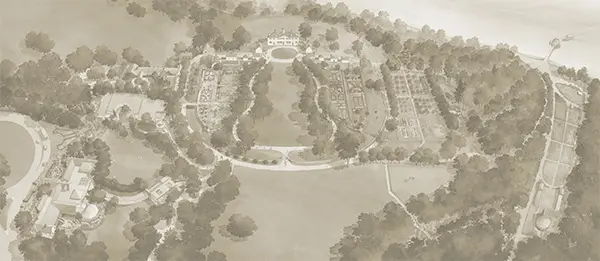This unique plant features bright blue-purple flowers on tall green stalks followed by interesting black seedpods. It forms a deep taproot and does not transplant well, so be certain of its location before planting.
Latin Name
Baptisia australis
Family
Fabaceae
Also Known As
Rattleweed Blue Wild Indigo
Type of Plant
Bloom Season
May - June
Seasons
Specifications
Uses
Sunlight Exposure
Tolerances
Attracted Wildlife
Toxicity
Colors
Native Range
Eastern United States
History
False indigo was originally cultivated as a potential dye, but the color proved weaker than true indigo. It was noted in the early 18th century by Williamsburg naturalist John Clayton.
Other Details
Planted at Mount Vernon


Hardiness Zones
















Average annual extreme minimum temperature 1976-2005















Bartlett Tree Expert Company has been working with Mount Vernon Estate since 2011 providing expert arboricultural care and GPS mapping for the estate’s historic trees, as well as support from their research facility. Mount Vernon is proud to partner with Bartlett Tree Experts and appreciates their sponsorship of George Washington’s Mount Vernon Plant Finder App.
Bring Washington's Garden Home
Purchase our historic seeds, collected from plants grown at Mount Vernon and plant them in your own garden.
Shop Now

